Afro-descendant, Indigenous communities on Colombia-Ecuador border join forces to adapt to climate change
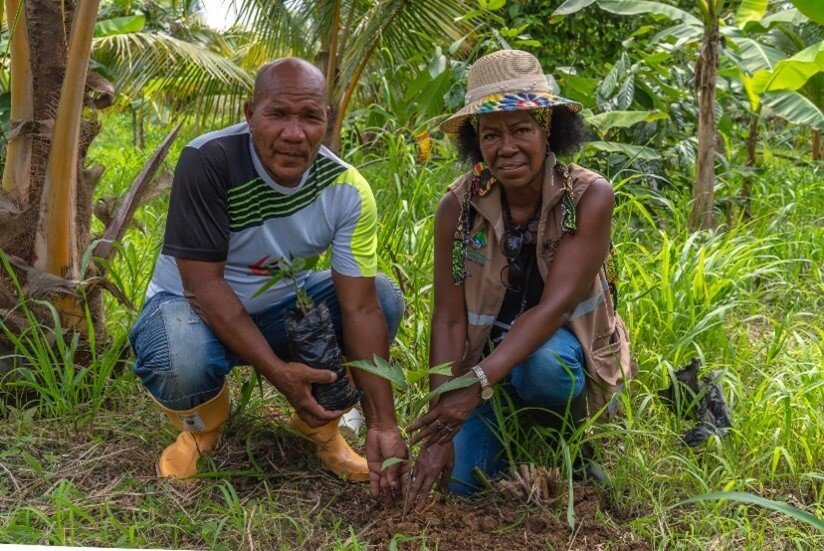
“The land without a tree is naked and tender,” sings Inés Morales as she cradles a small mangrove plant in her hands. She is the leader and elder in the Afro-Ecuadorian Comarca of Northern Esmeraldas, a community living along Ecuador’s border with Colombia. “It grows like a child and holds in its memory the hidden songs of the universal soul,” she continues. In her community, trees and mangroves are considered sources of life.
In the Colombia-Ecuador border area, mangroves – forests that appear to float on water – are threatened by pollution, the climate emergency and violence related to drug trafficking.
According to estimates, 10 percent of mangroves have disappeared in the last 10 years at global level. In this particular area, the loss is estimated at 6 percent, corresponding to almost 145,000 hectares.
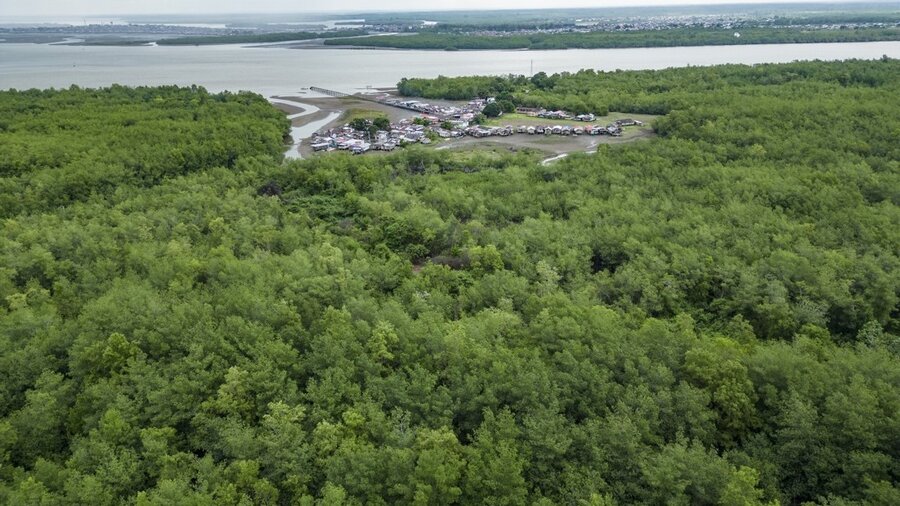
For centuries, these jungles and the tropical forests of the Amazon foothills have been home to Afro-descendant communities and the Awá Indigenous people. To them, the border that runs across their ancestral lands is just an imaginary line that does not prevent them from living as one.
In recent years, with the support of the World Food Programme (WFP), communities on both sides of the border have contributed to the reforestation of over 10,000 hectares of land. This includes 400 hectares of mangroves on the Ecuadorian side and 9,600 hectares of tropical forest in Colombia.
“The land where we live has been greatly affected by violence, drug trafficking and illicit crops,” says Amílcar Chapuez. He is referring to an area covered by tropical rainforest along the basins of the Mira-Matajé and Carchi-Guaitará rivers that run between the two countries, where approximately 70 Afro-descendant and Awá Indigenous communities live.
A member of the Awá people, Chapuez participates in a WFP-backed project on the Colombian side, which promotes the care of native crops in territories ranging from the Pacific coast to the Amazon. “Sowing seeds and planting trees are ways to generate harmony and coexistence,” he adds.
Mangrove oysters mean food security for a family in Ecuador
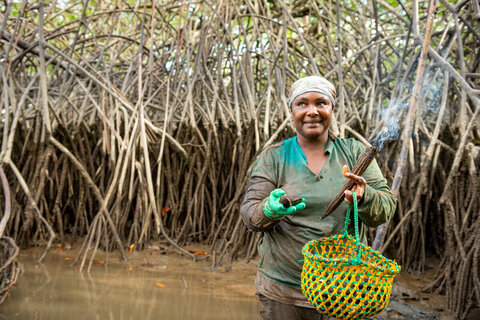
In Ecuador, WFP is supporting the restoration and reforestation of the mangrove. “For us, talking about the mangrove is talking about our own lives. We are part of it,” says Inginio Castillo, a community leader and environmental engineer in Esmeraldas province, where 42 percent of the population is experiencing a food crisis.
A sanctuary for diverse marine species, including shellfish, shrimp and crab, the mangrove serves as the cornerstone of the food chain for impoverished local communities, who have little access to basic services, including clean water.
WFP is actively engaged in the restoration of mangrove areas for shellfish harvesting and to protect communities against cyclonic storms. Additionally, WFP supports the construction of elevated structures – known as canoeras – to cultivate nutrient-rich crops, including vegetables, and provides safe water for food preparation, drinking and personal hygiene.
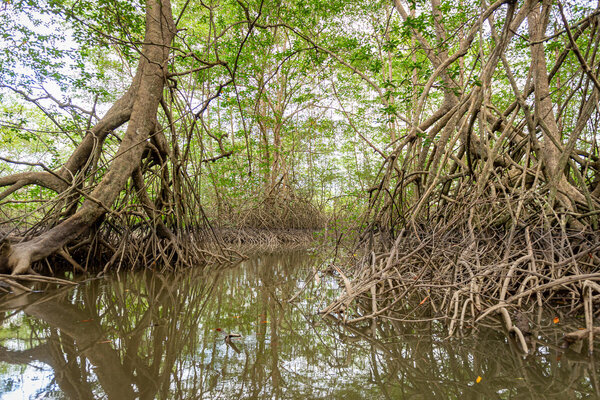
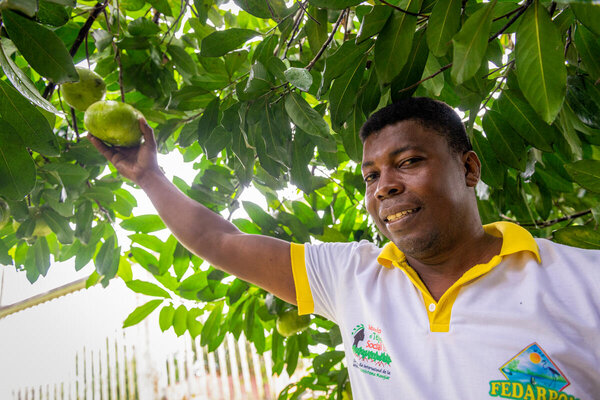
Across the border, in the Colombian rainforest, the Awá Indigenous people consider trees to be spiritual beings and the source of life. In their traditional worldview, corn, beans and other fruits of the land fell from a giant tree that reached up to the sky.
As well as supporting their immediate needs, WFP helps the Awá people preserve their rich agricultural heritage. Rescuing traditional seeds believed to be extinct in the area contributes to safeguarding the biodiversity of indigenous crops and reviving local farming practices.
This not only ensures food security, but also upholds the Awá people's sovereignty over their traditional food sources. Examples of such crops include red beans, inche (an edible seed that can be used for medicinal purposes), native corn, chibatillo chili, purple plantain and yellow cassava.
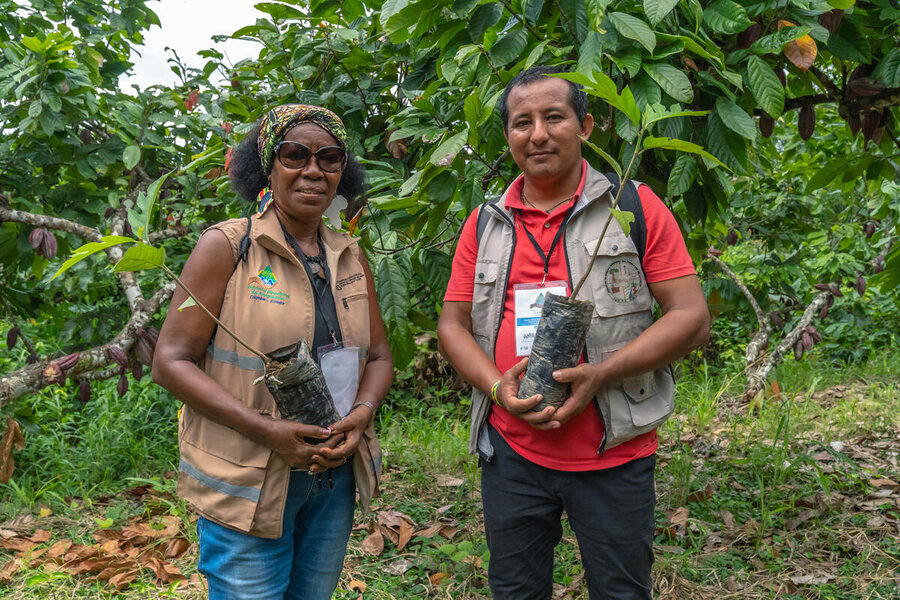
The nursery in the Ishú Awá Indigenous reserve, in Colombia’s southern department of Putumayo, hosts over 40,000 small plants. Not only to the trees they will be come have spiritual significance, they will also be used for food and timber.
“We are strengthening our seeds to have our own fruits and provide healthier food for our children,” says Amílcar Chapuez.
Piedad Yascuarán, who is in charge of the nursery, proudly picks a tomato from the vine as she stands in her lush garden filled with yucca, plantains, cilantro and other vegetables. As parts of its efforts to improve community resilience, WFP is providing families with kits – including tools and seeds – to cultivate vegetable gardens, or chagras in the Awá language.
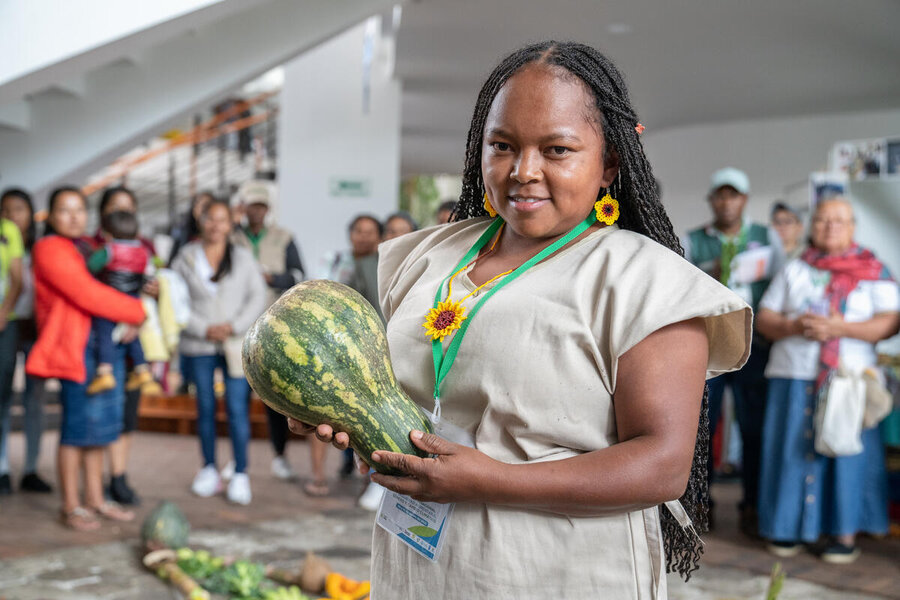
The local primary school also boasts a WFP-supported garden, where children and teachers grow vegetables that complement the government-provided school meals.
“I have convinced other families that food security is important,” says Yascuarán – this means they see the importance of having the nutritious food they need to survive and thrive.
A leader in her community, she is also part of the technical team of the Association of Indigenous Councils of the Awá people in Putumayo (ACIPAP), the Indigenous implementing partner which provides technical and operational guidance for the continuous improvement of the project. For example, this includes the establishment of a calendar of planting times which combines traditional practices and knowledge with the use of technology including drones, GPS and early warning systems, among others.
“This project sets an example for WFP in the Americas. Its participatory approach has built community ownership, knowledge and trust in both countries, enabling the joint design of practical and sustainable solutions,” says Melissa David, who heads WFP Colombia’s office covering the southern departments of Cauca, Nariño and Putumayo.
“Thanks to this collective effort, thousands of hectares of mangroves and forests are being restored, while native species grow in community nurseries, and the exchange of knowledge and experiences is fostering climate change adaptation in a complex context.”
WFP’s Binational Adaptation Project, aiming to address the needs and challenges posed by climate change in the territories along the Colombia-Ecuador border, is financed by the Kyoto Protocol Adaptation Fund. Its implementation has involved the commitment and participation of Afro-descendant and Awá Indigenous organizations, the leadership of the environmental ministries of Colombia and Ecuador, as well as contributions from other social organizations and institutions from both countries.
